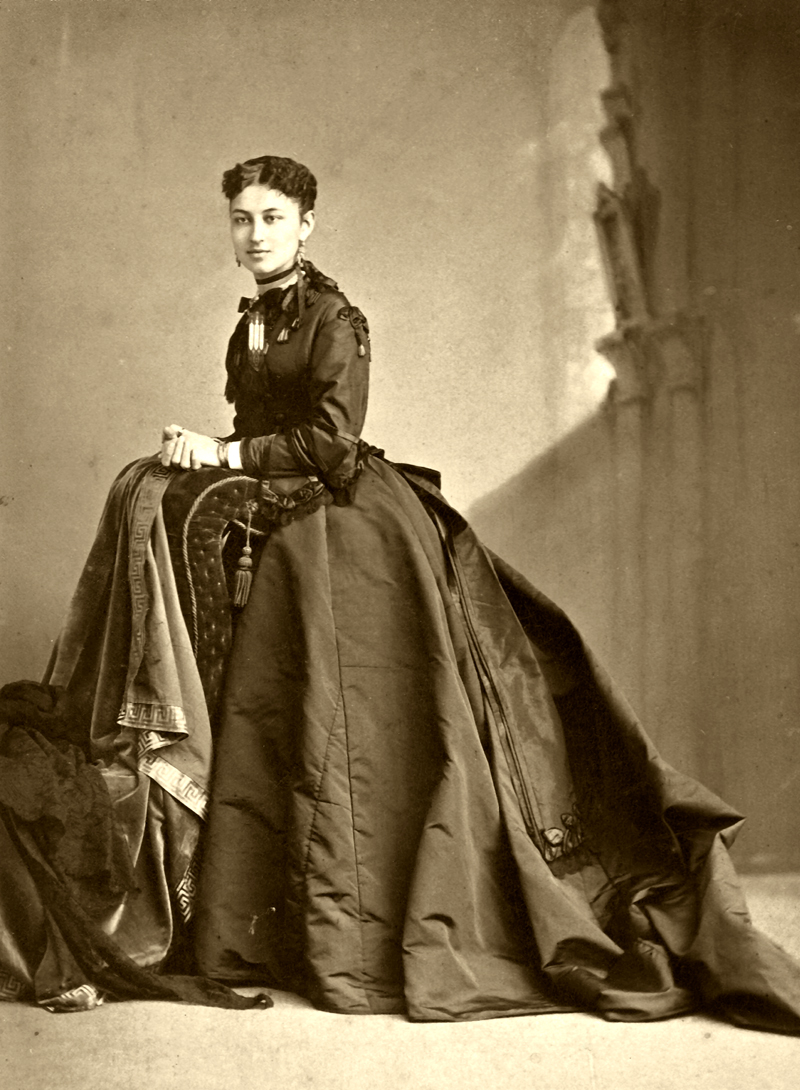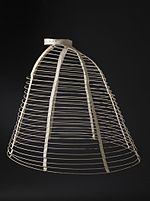
Figure 1 – Napoleon Sarony Portrait of a Young Woman in a Crinolette, c 1875. Digitized albumen print. In the public domain because of its age.
A few weeks back, I posted a photograph from the 1870’s by Napoleon Sarony of a beautiful woman in an equally beautiful hooped skirt. I recently purchased on Ebay another Sarony photograph (Figure 1) from the same period showing an equally beautiful young lady in an even bigger hooped skirt. And note how Sarony extends the size of the dress by placing a fabric over the posing chairs which the lady holds. What is, or was, going on here? Certainly the hooped skirt is an alien feature, which we cannot quite relate to, that projects a sort of mysterious exoticism into mid-nineteenth century portraits. I mean, the men’s clothing is not so bizarre or different from ours, with the exception perhaps of the ties – and truth to tell, so few men wear ties today anyway.

Figure 2 – Steel wired crinoline cage c 1865 from the Wikipedia original from This file is in the public domain because it has been released by the Los Angeles County Museum of Art www.lacma.org with its “Public Domain High Resolution Image Available” mark.
An interesting side point, is that women’s dresses grew to monstrous proportions at precisely the same time that nineteenth century paleontologists pondered the evolutionary etiology and advantages of greater size among dinosaurs. In reality however, hooped skirts provided no such evolutionary advantage with thousands of women killed each years when such dresses caught on fire or were caught up by wagon wheels on bustling streets. Indeed, there was a public campaign against them. But these pleas fell on the deaf ears of slaves to fashion. And slaves they were indeed. I went several years ago to visit the National Historic Site at Seneca Falls New York, the Museum of the Suffrage Movement. It was pointed out by a guide that, by necessity, the first step in the emancipation of women in the United States and Europe was to free them from the bonds of their clothing.
Initially the hooped skirt was devised as a modest-mechanism to separate the long dress from the legs. Arguably, in warmer climates it offered a solution of how to stay cool while wearing a long dress with due modesty. In Tudor times, it was referred to as a ‘farthingale’. Structurally, hooped skirts consisted of a stiff-fabric petticoat sewn with channels designed to hold stiff semi-flexible materials like rope, osiers, whalebone, steel, or rubber. And as Tchaikovsky so elegantly proved with his “Mother Ginger” character in the ballet “Nutcracker,” you can hide a lot under all those hopes including a troupe of small children.
One material that was popular in the production of stiff petticoats was crinoline made of horsehair (“crin”) and cotton or linen. However, by the mid 1850’s the word “crinoline” came to refer to the “fashionable” silhouette provided by horsehair petticoats, and to the underskirts made using steel, cane, whalebone or rubber hoops. How times and fashions of aestheticism change. Today, arguably, these once striven for body shapes as more reminiscent of the back sides of hippopotamuses than shapely young ladies. These hoops came to be known as crinoline cages. that replaced them in the mid-1850s. Figure 2 shows a typical crinoline cage of the day. Despite widespread criticism, crinolines became the height of women’s fashion in the United States and Europe from the 1850s to the 1870s.
In the early 1870’s crinolines were replaced by crinolettes and bustles. Again we may turn to paleontology and speak of transitional forms. The crinolette was fashionable from 1867 through to the mid-1870s, and I believe that is really what we are looking at in Figure 1, and indeed enables more accurate dating of the photograph to the mid 1870’s. The crinolette was typically composed of half-hoops, sometimes with internal lacing or ties designed to allow adjustment of fullness and shape. The key design point was that the hoop was confined to the rear.
The transition from the crinoline cage dresses to the crinolette posed a problem for Victorian ladies, what to do with out of fashion dresses. Anyone who saved their youthful bell-bottomed jeans of the 1960’s realizes that even when items come back into fashion, they are always different enough to fuel a profit thirty fashion industry. Indeed, the crinoline and other hoops still make their way to the Paris runway of 2015. But there is always just enough difference … The British humor magazine Punch offered a thrifty suggestion to the question of what to do with all those crinolines taking up excessive spaces in ladies’ closets, that they could be used to protect plants against the rigors of the winter months.

Pingback: Crinolines, crinolettes, and bustles -the unanswered questions